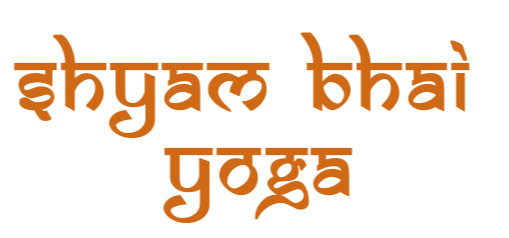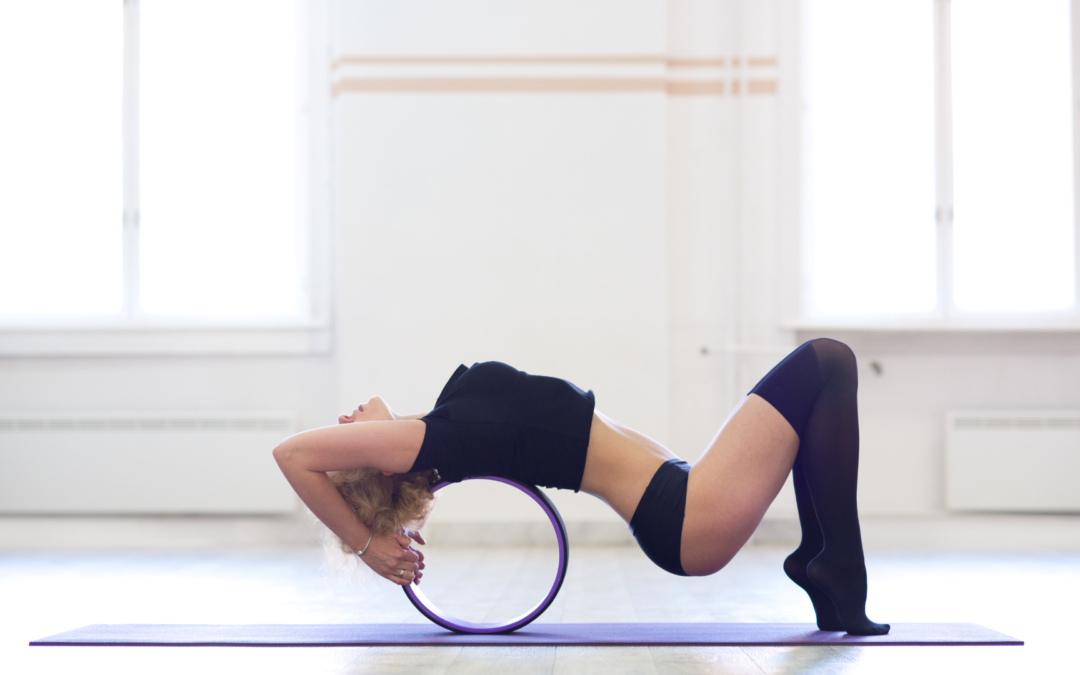What Equipment Do You Need to Start Practicing Yoga at Home?
Practicing yoga at home offers the flexibility to tailor your sessions to your personal schedule and preferences. Whether you’re a beginner or an experienced yogi, having the right equipment can significantly enhance your practice. In this blog, we’ll delve into the essential equipment you’ll need to start practicing yoga at home, discuss additional items that can elevate your practice, and provide tips on selecting the best gear for your needs.
1. Yoga Mat
Why You Need It: A yoga mat is the cornerstone of your practice in online yoga classes. It provides a non-slip surface to perform poses safely, offers cushioning for your joints, and defines your personal space.

The global yoga mat market size is projected to expand from USD 14.4 billion in 2023 to USD 23.32 billion by 2031.
What to Look For:
- Material: Common materials include PVC (durable and sticky), TPE (eco-friendly and lightweight), and natural rubber (biodegradable and offers excellent grip).
- Thickness: Mats range from 1/16″ (1.5mm) to 1/4″ (6mm). Thicker mats provide more cushioning but can be less stable for balance poses.
- Texture: Smooth mats may offer less traction than textured ones. Choose based on your preference for feel and grip.
2. Yoga Blocks
Why You Need It: Blocks help you achieve proper alignment, deepen stretches, and provide support in challenging poses. They are especially useful for beginners who may need assistance reaching the floor.

What to Look For:
- Material: Foam blocks are lightweight and affordable, while cork blocks offer more stability and are eco-friendly.
- Size: Standard size is 9″ x 6″ x 4″. Some practitioners prefer smaller blocks (9″ x 6″ x 3″) for certain poses.
3. Yoga Strap
Why You Need It: A yoga strap aids in flexibility by allowing you to reach limbs and hold poses that might otherwise be out of reach. It’s particularly beneficial for those with tight muscles.

What to Look For:
- Length: Straps typically come in 6-foot, 8-foot, and 10-foot lengths. Choose based on your height and the types of stretches you plan to do.
- Material: Cotton straps are durable and non-slip, while nylon straps are more flexible but can slip more easily.
4. Yoga Blanket
Why You Need It: Blankets offer support and comfort in various poses, such as sitting, lying down, or for additional warmth during Savasana (corpse pose). They can be folded to provide extra cushioning for joints or used as a prop.
What to Look For:
- Material: Wool, cotton, and synthetic blends are common. Wool blankets are warm and sturdy, while cotton and synthetic blends are lighter and more affordable.
- Size: A larger blanket (approximately 78″ x 54″) is more versatile and can be folded into different shapes and thicknesses.
5. Yoga Bolster
Why You Need It: A bolster is essential for restorative yoga, providing support and promoting relaxation. It can be used to support the back, neck, and legs in various poses.

What to Look For:
- Shape: Rectangular and cylindrical bolsters are the most common. Rectangular bolsters are more stable, while cylindrical bolsters can be more versatile.
- Filling: Cotton, buckwheat, and synthetic fibers are typical fillings. Cotton is firm and supportive, buckwheat conforms to the body, and synthetic fibers are lightweight.
6. Yoga Wheel
Why You Need It: A yoga wheel helps with backbends, improving flexibility, and balance. It’s an excellent tool for stretching and opening the chest, shoulders, and hips.

What to Look For:
- Material: Common materials include plastic and cork. Cork wheels are eco-friendly and offer better grip.
- Size: Standard size is 12″ in diameter and 5″ wide. Smaller wheels (6″ in diameter) are available for targeted stretching.
7. Meditation Cushion
Why You Need It: A meditation cushion, or Zafu, provides comfort and support during seated meditation, helping to maintain proper posture and reduce strain on the back and knees.

What to Look For:
- Shape: Round and crescent shapes are common. Round cushions provide even support, while crescent cushions offer additional space for the legs.
- Filling: Buckwheat hulls are popular for their moldable support, while cotton is firm and resilient.
8. Yoga Towel
Why You Need It: A yoga towel is essential for hot yoga or if you tend to sweat a lot. It absorbs moisture and provides additional grip, preventing slipping on the mat.
What to Look For:
- Material: Microfiber towels are highly absorbent and quick-drying.
- Size: Ensure the towel covers your yoga mat fully.
9. Yoga Clothes
Why You Need It: Comfortable, breathable clothing allows you to move freely and stay focused during your practice. Look for moisture-wicking materials that keep you dry and comfortable.
What to Look For:
- Fit: Choose fitted but not restrictive clothing. Avoid clothes that are too loose, as they may interfere with your movements.
- Material: Look for materials like cotton, spandex, and polyester blends for breathability and stretch.
10. Water Bottle
Why You Need It: Staying hydrated is crucial during your regular online yoga classes practice, especially in hot yoga. A water bottle ensures you can replenish fluids as needed.
What to Look For:
- Material: Stainless steel bottles are durable and keep water cool. BPA-free plastic bottles are lightweight and affordable.
- Size: Choose a size that meets your hydration needs without being cumbersome.
11. Yoga Mat Bag or Strap
Why You Need It: A mat bag or strap makes it easy to carry and store your yoga mat, especially if you practice in different locations.
What to Look For:
- Type: Mat bags offer more protection and often include pockets for additional items. Straps are simpler and more lightweight.
- Size: Ensure the bag or strap fits your mat’s dimensions.
Additional Equipment to Enhance Your Practice
While the above items are essential, there are additional pieces of equipment that can further enhance your home yoga practice.
12. Foam Roller
Why You Need It: A foam roller is excellent for myofascial release, helping to relieve muscle tightness and improve flexibility.
What to Look For:
- Density: Softer rollers are gentler on muscles, while firmer rollers provide a deeper massage.
- Size: Standard rollers are 36″ long, while smaller sizes (12″ and 24″) are available for targeted areas.
13. Essential Oils and Diffuser
Why You Need It: Essential oils can enhance your yoga practice by promoting relaxation, focus, and energy. A diffuser disperses the oils into the air, creating a calming atmosphere.
What to Look For:
- Oils: Lavender, eucalyptus, and peppermint are popular choices for their soothing and invigorating properties.
- Diffuser: Choose a diffuser with a suitable capacity for your space and features like timer settings and light options.
14. Yoga Chair
Why You Need It: A yoga chair can assist with alignment, provide support in various poses, and is particularly useful for therapeutic or restorative practices.
What to Look For:
- Type: Folding metal chairs are commonly used in yoga for their stability and versatility.
- Padding: Ensure the chair has adequate padding for comfort.
15. Yoga Ball
Why You Need It: A yoga ball can improve balance, flexibility, and core strength. It’s also useful for prenatal yoga and physical therapy exercises.

What to Look For:
- Size: Choose a ball size based on your height. Common sizes include 55cm, 65cm, and 75cm in diameter.
- Material: Look for burst-resistant materials for safety.
Tips for Choosing Yoga Equipment
When selecting yoga equipment, consider the following tips to ensure you choose the best items for your practice:
- Quality Over Quantity: Invest in high-quality items that will last longer and provide better support and comfort.
- Eco-Friendly Options: Consider environmentally friendly materials and brands that prioritize sustainability.
- Your Practice Style: Tailor your equipment to your specific style of yoga (e.g., Hatha, Vinyasa, Restorative) and personal needs. Read our blog “How Can You Incorporate Yoga into Your Busy Schedule?” to know more about practicing yoga on a busy day.
- Budget: While quality is important, there are affordable options available. Prioritize essential items and add additional equipment as your practice evolves.
- Try Before You Buy: If possible, try out equipment in a store or borrow from a friend to ensure it meets your needs and preferences.
Conclusion
Starting a yoga practice at home is an empowering and convenient way to incorporate mindfulness and physical activity into your daily routine. By investing in the right equipment, you can create a comfortable and effective practice space that supports your journey towards improved health and well-being. Whether you’re just beginning or looking to deepen your practice, the equipment outlined in this blog will provide a solid foundation for a fulfilling and enjoyable home yoga experience.
Inquiry
If you have any questions, please feel free to reach out. We’ll be glad to help!

